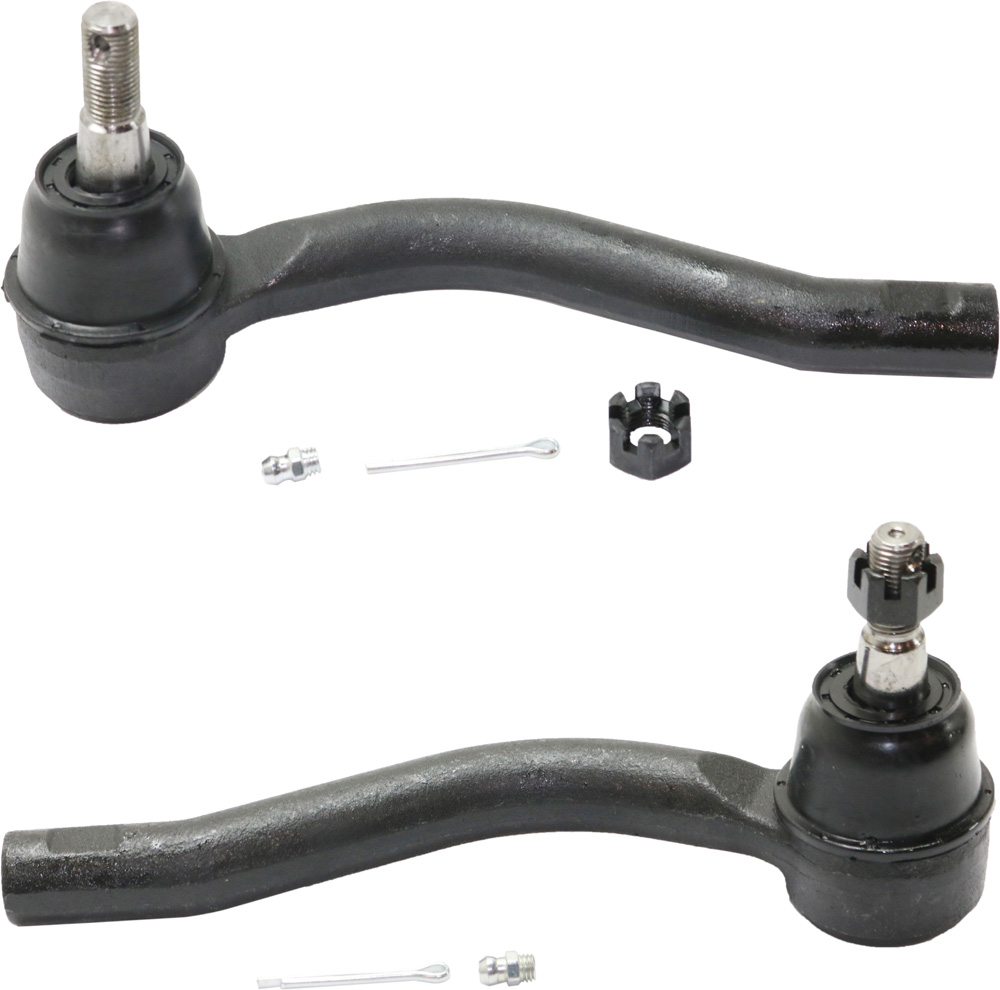Cars are able to turn with ease thanks to their steering knuckles, which provide a mounting point for the wheels and allow them to pivot. Like many of the components that make up your vehicle, a steering knuckle may eventually need to be replaced.
In this article, we discuss the situations wherein you’ll likely need to replace your steering knuckle.
What is a Steering Knuckle?
The steering knuckle provides a mounting point for the wheel hub. It also attaches to the ball joints if there are two control arms or, on most strut suspension systems, the lower ball joint and the strut.
The outer tie rod end also attaches to the steering knuckles and swivels both knuckles on the ball joint(s) as the steering wheel is turned. The knuckle contains the bearings, the hub, with the tire and wheel attached to the hub. This arrangement enables the vehicle to be steered.
While steering the vehicle, both the left and right knuckles turn the same direction, but the inside knuckle always turns about 12 degrees sharper than the outside knuckle no matter which way the turn, because the inner wheel is always traveling in a smaller circle when the vehicle is in a turn than the outer wheel.
This is called “toe out on turns” (TOOT) and is designed into the steering geometry or the steering rack if the vehicle is so equipped.

How the Steering Knuckle Works
Found behind each front wheel, the knuckle makes sure its associated wheel moves within a certain plane.
In a MacPherson strut-style front suspension, the top of each knuckle bolts to a strut assembly. The bottom of the knuckle attaches to a ball joint in the lower control arm. A tie rod end, which is part of the steering linkage that connects to the steering wheel, attaches to the side of the knuckle.
Some vehicles with strut suspension will have the lower end of the strut attached to the lower control arm, and on that type of suspension there will be upper and lower control arms fitted with ball joints to provide the steering axis.
Some vehicles with strut suspension will have the lower end of the strut attached to the lower control arm, and on that type of suspension there will be upper and lower control arms fitted with ball joints to provide the steering axis.
– Richard McCuistian, ASE Certified Master Automobile Technician
When the driver turns the steering wheel, the tie rod pulls or pushes on the knuckle. The knuckle then pivots on the ball joint and strut mount, allowing the wheel and tire assembly to move in and out.
The disk brake calipers also mount to the steering knuckles.

When Do You Need to Replace the Steering Knuckle?
The steering knuckle will typically only need replacement if any of the following happen:
- Excessive rust and corrosion on the steering knuckle
- Visible damage after a collision or car accident
- Wheel bearing got stuck in place and cannot be removed
Manufacturers engineer steering knuckles with durability in mind. They use tough materials like high-grade steel or aluminum alloys that are designed to withstand both impact force and torque.
Steering knuckles can handle certain types of minor impact, such as from the tires hitting small obstacles like potholes or speed bumps, especially if the vehicle isn’t moving very fast. However, major impact damage from, say, a collision, can deform the knuckle to the point that replacement is required.
Below are examples of actions and incidents that can damage the steering knuckle:
Rust
Extensive exposure to oxygen and moisture will eventually oxidize iron and steel. Substances like road salt can also speed up rust formation.
Rust makes a car part structurally weaker and reduces its capabilities. For the most part, steering knuckles rely exclusively on their material to resist rust—two popular choices are stainless steel and weathering steel.
It’s considered normal for a steering knuckle to develop a thin layer of rust, especially if it uses weathering steel. However, if the steering knuckle is severely rusted, this is considered unsafe and should be replaced as soon as possible.

Wheel Hub Jammed in Place Because of Rust
The steering knuckle includes several parts that work together to control and stabilize the vehicle. One such part is the wheel hub that connects the wheel and the vehicle’s suspension.
Rust on the steering knuckle can eventually spread to the wheel hub. The hub itself can also corrode since it’s always exposed to the air and the tire surrounding the hub drives over muddy, wet, or snowy surfaces.
If the hub or its retaining bolts are severely rusted, it may become impossible to remove the hub from the knuckle. In such a scenario, the entire knuckle may need to be replaced to service the hub.
Impact Damage from Collision
Steering knuckles can also become damaged following a collision. If that happens, the deformed knuckle will need to be replaced.
Symptoms of a Faulty Steering Knuckle
Since the knuckles are a critical part of the front steering and suspension, they will affect the vehicle’s steering and handling if they become damaged.
The following are common symptoms of a faulty steering knuckle:
- Vibrations in the steering wheel
- Steering pulls to one side
- Uneven wear on the tires
- Misaligned steering wheel during driving
If you observe any of these warning signs, bring the affected vehicle to a mechanic for evaluation. Only replace the knuckle after expert confirmation of its failure. Otherwise, the problem may persist despite installing a new and potentially expensive replacement part.
How Much Does a Steering Knuckle Replacement Cost?
A steering knuckle can cost anywhere between $45 and $910 for the part itself (labor is extra if you need to have the knuckle professionally installed). Its price tag can vary depending on the year, make, and model of the vehicle as well as the quality of the replacement part.
Steering knuckles are sold individually, in a set of two, as an assembly, or as part of a replacement kit.
Shop this Project



Any information provided on this Website is for informational purposes only and is not intended to replace consultation with a professional mechanic. The accuracy and timeliness of the information may change from the time of publication.



































